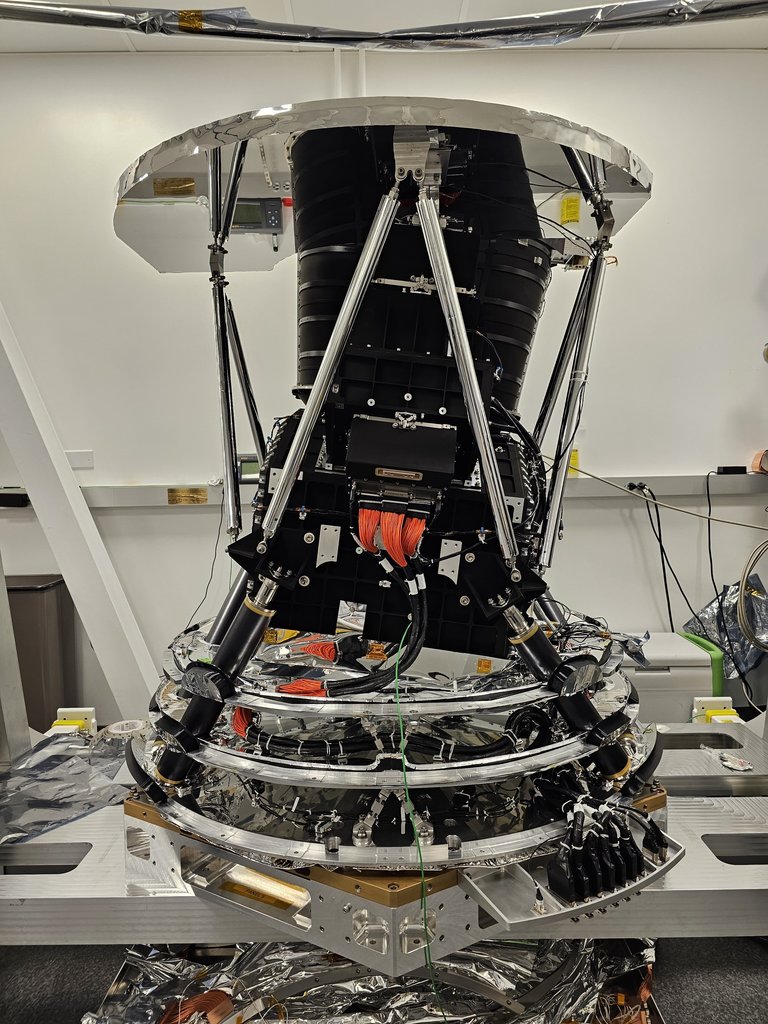SPHEREx Space Telescope Stays Cool in Basement at Caltech

The SPHEREx telescope and detectors will stay cold in space with the help of three "V-groove" radiators, seen here at the bottom of the telescope. Nicknamed the "jewels that keep SPHEREx cool," these radiators emit thermal energy as infrared radiation out to the sides, and into the cold of space. The radiators are staged such that each one reaches a lower temperature as you move toward the top. The last radiator stage is a plate, located near the top of the telescope, which provides the lowest temperature stage for the long-wavelength detectors. The telescope was built by Ball Aerospace.
NASA's SPHEREx space telescope has been tucked inside a custom-built chamber on and off for the past two months undergoing tests to prepare it for its two-year mission in space. SPHEREx, which stands for Spectro-Photometer for the History of the Universe, Epoch of Reionization and Ices Explorer, is set to launch into orbit around Earth no later than April 2025. It will map the entire sky in infrared wavelengths of light, capturing not only images of hundreds of millions of stars and galaxies but spectra for these objects as well. Spectra are created by instruments that break apart light into a rainbow of wavelengths, revealing new details about a cosmic object's composition, distance, and more.
Rest of the article here.
Recent News
NASA’s SPHEREx Observatory Completes First Cosmic Map Like No Other
Launched in March, NASA’s SPHEREx space telescope has completed its first infrared map of the entire sky in 102 colors. While not visible to the human eye, these 102 infrared wavelengths of light are prevalent in the cosmos, and observing the entire sky this way enables scientists to answer big questions, including how a dramatic event that occurred in the first billionth of a trillionth of a...
Read MoreSPHEREx has made detailed multi-spectral observations of interstellar comet 3I/ATLAS, detecting an abundance of carbon dioxide gas in its coma (the extended gaseous atmosphere of a comet) and water ice in its nucleus. The observations were made between Aug. 7 to Aug. 15, when the object was about 290 million miles (470 million kilometers) from the Sun.
Read MoreNASA’s newest astrophysics space telescope launched in March on a mission to create an all-sky map of the universe. Now settled into low-Earth orbit, SPHEREx (Spectro-Photometer for the History of the Universe, Epoch of Reionization, and Ices Explorer) has begun delivering its sky survey data to a public archive on a weekly basis, allowing anyone to use the data to probe the secrets of the cosmos.
Read MoreBuilding SPHEREx in a Caltech Basement
How a NASA space telescope came together in a university lab
Read MoreAfter weeks of preparation, the space observatory has begun its science mission, taking about 3,600 unique images per day to create a map of the cosmos like no other.
Read More



